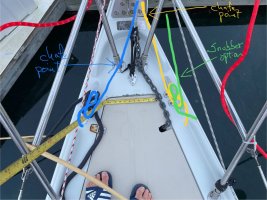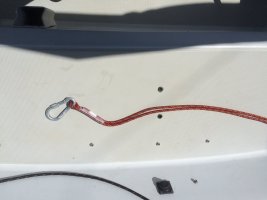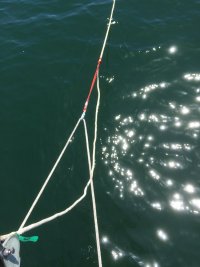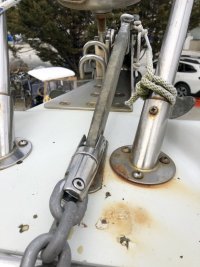I’ve been struggling to find a good way to secure my nylon anchor rode to avoid chafe. Without finding a good way to lead the rode from my roller to the either bow cleat, I’ve usually use a snubber line run outboard from the bow cleat and attached to the rode with a rolling hitch. Here’s a photo with some markup.
Either way I try to snub the rode directly onto a bow cleat from the roller it either chafes against the pulpit as shown by the blue line or against the bow roller fitting corner as shown by the yellow one. The green line shows the way my snubber usually runs over the starboard side.
What are other folks using to handle this? I have a manual S-L Anchorman vertical windlass just aft of the locker lid which offers plenty of jib sheet snagging opportunities by itself so I don’t really want to add another hard point there. I feel like there’s a straightforward answer out there somewhere that I’m missing. Anyone have ideas to share?
Thanks!

Either way I try to snub the rode directly onto a bow cleat from the roller it either chafes against the pulpit as shown by the blue line or against the bow roller fitting corner as shown by the yellow one. The green line shows the way my snubber usually runs over the starboard side.
What are other folks using to handle this? I have a manual S-L Anchorman vertical windlass just aft of the locker lid which offers plenty of jib sheet snagging opportunities by itself so I don’t really want to add another hard point there. I feel like there’s a straightforward answer out there somewhere that I’m missing. Anyone have ideas to share?
Thanks!






